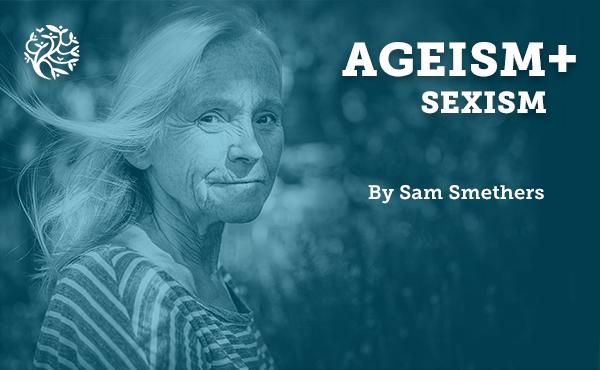"Courage calls to courage everywhere"
I find it so satisfying that the statue of Millicent Fawcett in Parliament Square depicts her as a 50- year-old woman. Just as women begin to become invisible in this world, Millicent stands there highly visible making a bold public statement, “courage calls to courage everywhere”. She had reached new heights at that time, taking over as President of the National Union for Women’s Suffrage Societies (NUWSS).
Invisibility is only the beginning for older women and ageing is not for the faint hearted. Courage most definitely calls as women experience multiple forms of ageism and sexism. A potent combination which men simply do not have to contend with.
Why don't we talk about ageing?
The fundamentals of what it means to be a woman, leave us as we age. What society defines as beautiful is young and free from wrinkles and grey hair. We barely see grey-haired women in magazines or on our TV screens, with the exception of Mary Beard who has received a torrent of abuse for her natural appearance as an older woman.
She is comfortable in her own skin in the age she presents to the world, but somehow our society finds that challenging. We all enter the menopause, a natural life stage, but we rarely speak about it. We are just expected to quietly and privately deal with it, (although sometimes it makes us want to scream from the rooftops). It affects us at work, our sex life, our physical health and emotional well-being.
It is a big deal, yet somehow we are conditioned not to talk about it. Even worse, it is ridiculed and dismissed.
The gender pay gap widens as we get older
The gender pay gap is 18%. We often think of it as a static thing but, in practice, it grows throughout women’s working lives. There are more older women in the workplace than ever before but by the time women reach their 50s, TUC analysis shows that the pay gap means women earn £85K less during the decade that follows.
This grows to a 40% pension gap in retirement. The causes of the pay gap layer up over time: discrimination, occupational segregation, the unequal impact of caring roles, the lack of flexible senior jobs.
Older women have probably experienced all or at least most of these things by the time they retire. If they have had more than one child, worked part-time, or dropped out of work for a while to care for an adult relative, their working lives and earning power will probably never recover.
Older women are expected to care more
Caring is something that women are still expected to do, but for older women this expectation is even greater, especially if they have spent time at home caring for children already. When we think of the growing role of informal care, it is not usually a man that we are thinking of.
Although 42% of carers are men, it is usually a partner that they are caring for. Women tend to care for everyone else (and their partners in some cases). Age UK research finds that there are 1.4 million older people who have unmet care needs and that population is growing.
Social care services are pulling back and it is women who are expected to fill the gap. As the state pension age is pushed back away from us, we expect older women to both work longer and care more. When it comes to the oldest old it is women who are the majority of the cared for.
We won't be silent
When the 1950s generation of women were told that they were going to have to miss out on several years of their retirement income, the unspoken assumption was that because they are older women they would just take it. But they didn’t and the WASPI campaign was born. The WASPI women challenged the assumptions about visibility and voice, about the role of women in society. They made themselves heard. Invisibility was definitely not for them.
The ageism and sexism they and millions of other women experience is an example of why we need our equalities legislation to recognise multiple discrimination – currently it doesn’t. But as a first step, we need an awareness-raising campaign of what it is like for older women in our society today and why it needs to change.
The views and opinions expressed in this article are those of the author and do not necessarily reflect the policy or position of Independent Age.
